Natural Stone Materials
About Granite
This beautiful stone comes from mother earth in a unique display of color and pattern. Granite is the top choice for high use areas, such as kitchen countertops and backsplashes because it is dense and durable. These slabs are also highly resistant to scratches and heat. Granite does require additional preventative maintenance of sealing over time but will deliver long lasting beauty to your home.
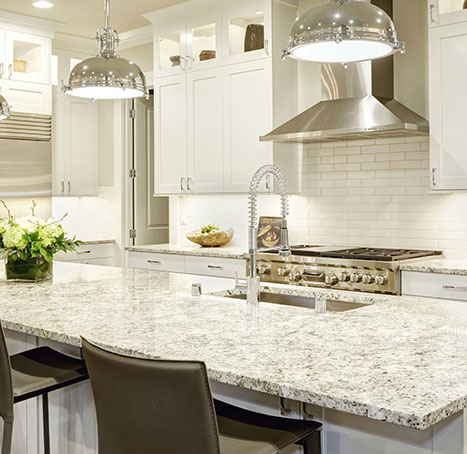
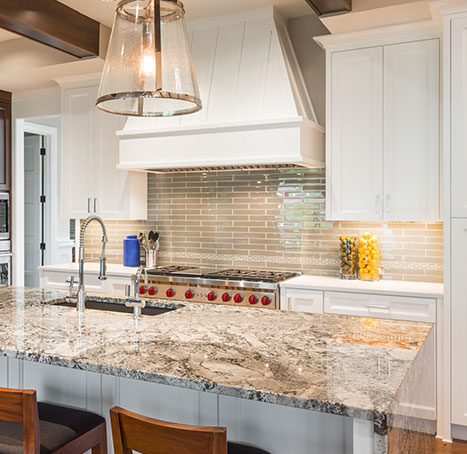
Nothing makes more of a statement than a beautiful granite slab. Known for their durability and longevity, granite slabs come in an abundance of colors, pattern or movement and finishes.
Different types of stone are better suited for different uses due to their degree of hardness and porosity. Granite is one of the top choices for high-use kitchen countertops since it is one of the hardest stones available.
Natural stone slabs begin as giant pieces of rock that are removed from large quarries and cut into slabs. Each slab has its own characteristics. Veining, crystallization, irregular markings, and shading are all considered normal aspects of natural stone and add to the beauty. Every slab of granite stone is unique.
"Stone is not perfect, it is original."
Veining is a natural part of the beauty of stone. It adds character and interest to any surface and may vary in consistency throughout the slab creating visual “movement” or pattern.
If the area where you are installing slab requires more than one piece, seaming is necessary. The placement of seams is dictated by the size of the slabs, density of the stone and the layout of the area. Granite slabs with more pronounced movement and veining may increase the visibility of the seams.
Even after the polishing or honing process, no granite slab will have a perfectly smooth surface. There may be small chips or pits that are sometimes apparent in different lighting conditions. Different lighting can also cause faint “cloudy spots” to become visible when viewing your countertop or wall from different angles.
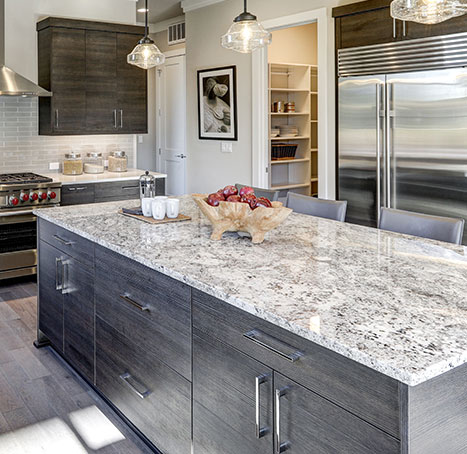
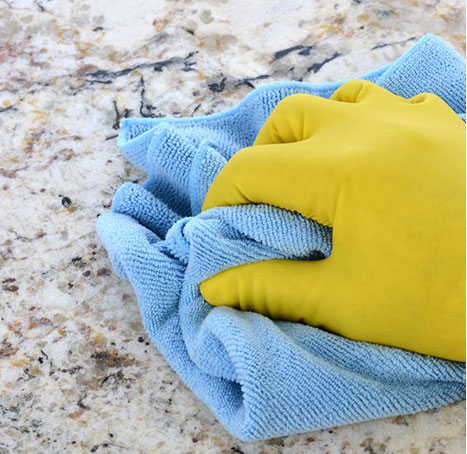
Sealing your granite slab after installation will protect the stone’s original beauty and provide additional stain resistance. There are different types of sealers depending on the type of stone.
About Marble
Marble is a timeless beauty that offers a soft elegance to the surfaces it adorns. Stunning in kitchens, bathrooms, backsplashes and surrounds, this centuries old stone is at home in a variety of interiors from classic transitional to casual coastal. Marble is available in many different color variations and usually displays a veining pattern. It is a softer stone than granite and should be sealed to protect the stone’s natural beauty and performance.
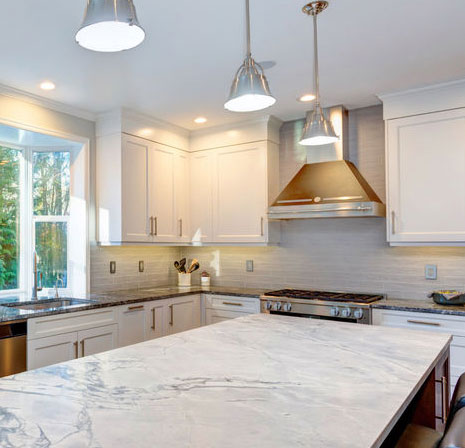
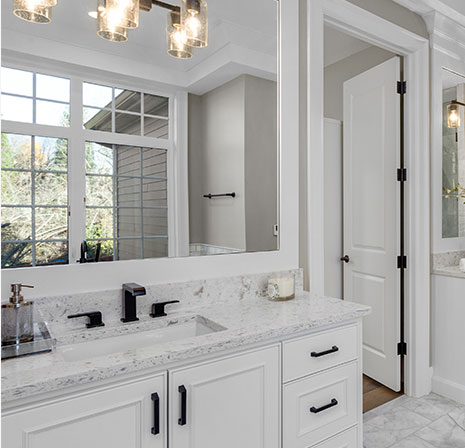
Nothing makes more of a statement than a beautiful marble slab.
Different types of stone are better suited for different uses due to their degree of hardness and porosity. Marble is a popular choice for kitchen countertops and backsplashes, but it does require sealing as it is more porous than other materials such as granite and quartz. Marble is a beautiful element in bathrooms for both countertop and wall applications.
Natural stone marble slabs begin as giant pieces of rock that are removed from large quarries and cut into slabs. Each slab has its own characteristics. Veining, crystallization, irregular markings, and shading are all considered normal aspects of natural stone and add to the beauty. Every slab of marble is unique.
"Stone is not perfect, it is original."
Veining is a natural part of the beauty of marble. It adds character and interest to any surface and may vary in consistency throughout the slab creating visual "movement" or pattern.
If the area where you are installing slab requires more than one piece, seaming is necessary. The placement of seams is dictated by the size of the slabs, density of the stone and the layout of the area. Marble slabs with more pronounced movement and veining may increase the visibility of the seams.
Even after the polishing or honing process, no slab will have a perfectly smooth surface. There may be small chips or pits that are sometimes apparent in different lighting conditions. Different lighting can also cause faint “cloudy spots” to become visible when viewing your countertop or wall from different angles.
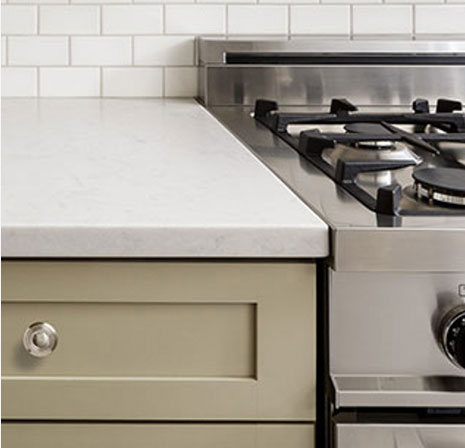
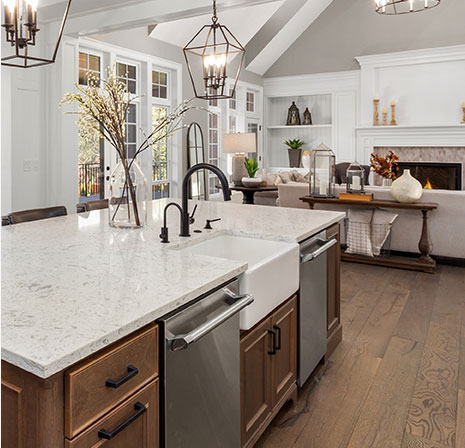
Slabs are solid pieces of stone that are used for countertops, backsplashes, wall, and surrounds. The look is solid and stunning.
Different stone types are better suited for different areas and uses. Marble is more porous than other materials and requires additional care to maintain its beauty.
Seams in slabs are possible and can be visible depending upon the coloring, veining or movement and layout.
Sealing your marble slab after installation will protect the stone’s original beauty and provide additional stain resistance. There are different types of sealers depending on the type of stone.
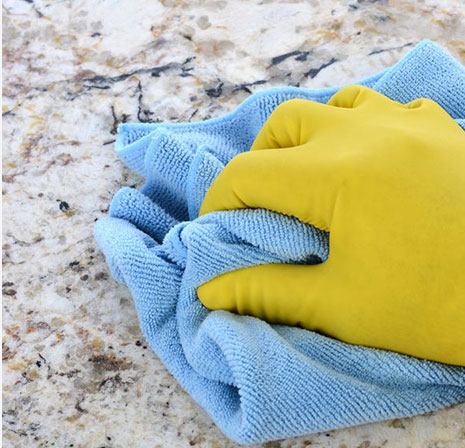
About Quartzite
Sophisticated quartzite is a stylish choice for your home and has become increasingly popular due to its durability, low maintenance and gorgeous color palette compliments of mother nature.
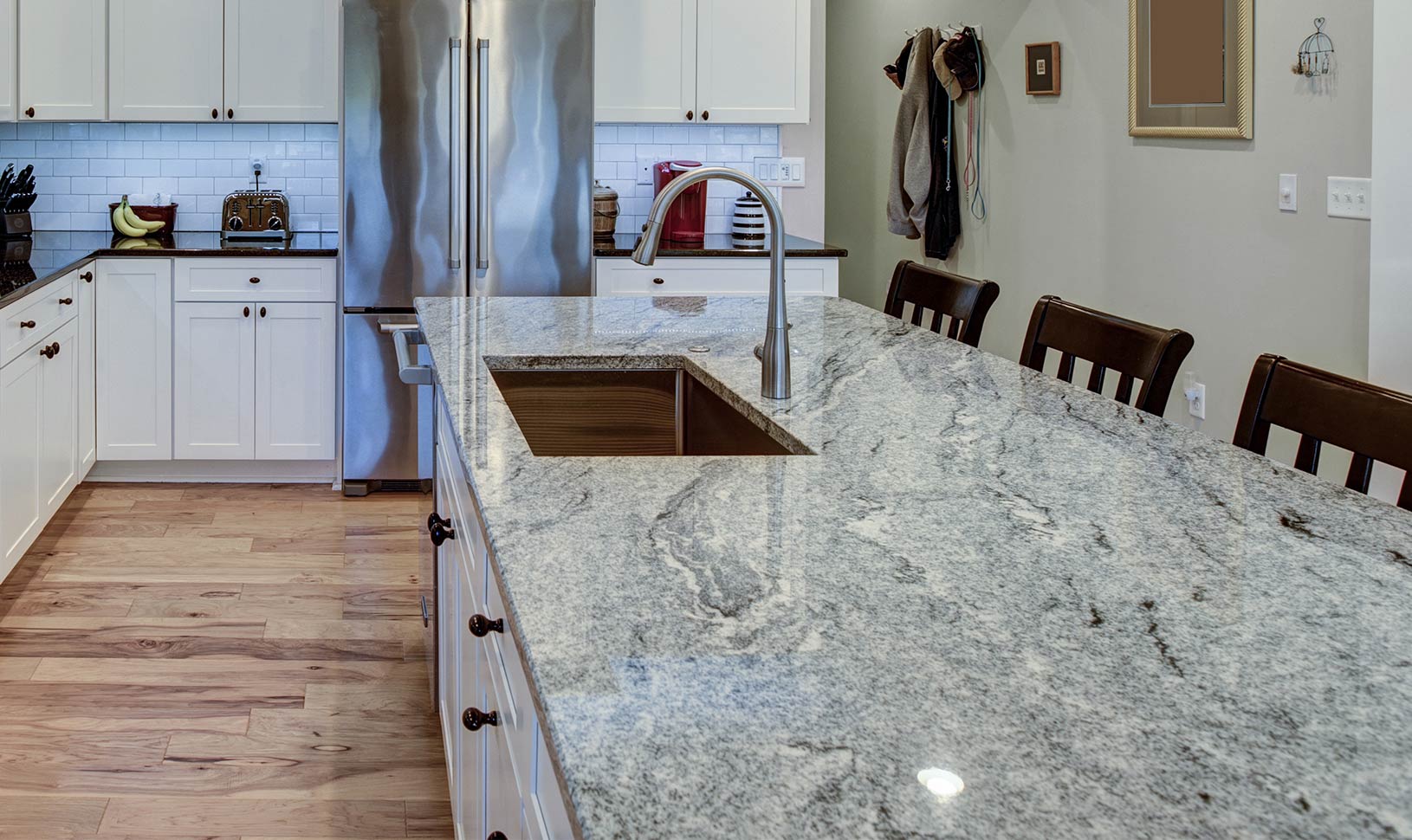
Having similar names, there tends to be some confusion between quartz and quartzite so here’s what you need to know. Quartzite is a natural stone that begins life as sandstone and under extreme heat and pressure deep in the earth, transforms into quartzite. The stone is mined, cut into slabs, and then precisely cut using diamond blades to become countertops. The slabs are polished and sealed for durability.
Quartz is a manmade material, often called engineered stone that is made from a combination of crushed stone, resins and piment for color which is then fabricated into countertops.
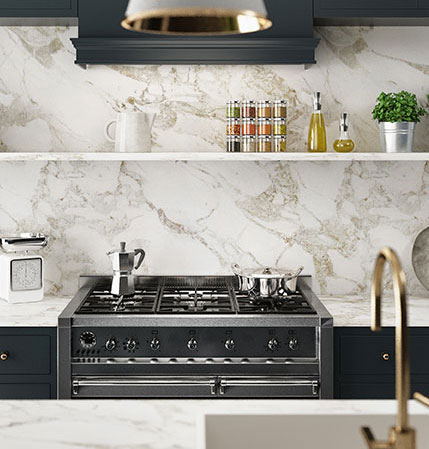
Natural quartzite requires similar care to that of other natural stones. Promptly wipe up spills and use trivets for hot items to protect the stone’s surface. Regular yearly sealing is recommended to minimize any etching or stains.
There are many benefits with Quartzite. Applications include countertops and feature walls such as a stunning backsplash or tub and shower walls. This material is a popular choice for kitchens because it is extremely durable. In fact, quartzite is harder than granite and quartz. It is also highly resistant to heat and stains although regular sealing is required to protect the stone’s surface.
Quartzite boasts a sophisticated style similar to the beauty of marble but without the worry. Quartzite is low porous making it less susceptible to staining. Marble is a softer more porous stone. Same style smarter choice!
The color palette features earth-tones such as white, gray, and warm neutrals. The lighter colors tend to be the most popular and some colors are available.
The slabs will feature a variety of looks from distinct veining in a more solid color to more movement and crystalline sparkles.
About Soapstone
Soapstone is 100% natural and quarried from the earth just like granite and marble. It features a mineral-talc composition giving it a smooth surface. It is a very dense and durable stone that has a hardness similar to marble.
Used for years as laboratory countertops and in fireplaces, wood stoves, and ovens, it has recently made its mark with interior designers, home builders, architects, and countertop fabricators. With the ability to achieve many looks like early American or modern and contemporary design, soapstone has become a popular choice due to its unique, marbling features and flowing veins. It’s a versatile product that can be used for both sinks and outdoor applications, and its beauty is shown without the need for polishing or surface treatments. Soapstone is practically indestructible and adds elegance and enduring value to any project.
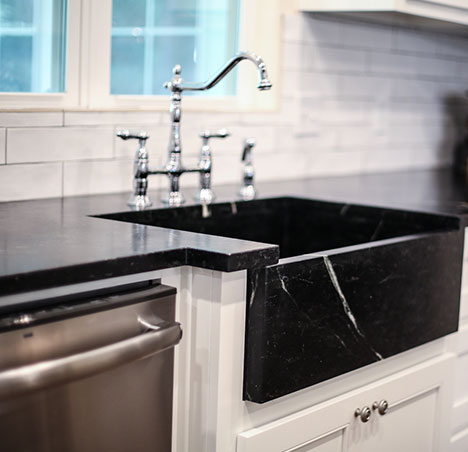
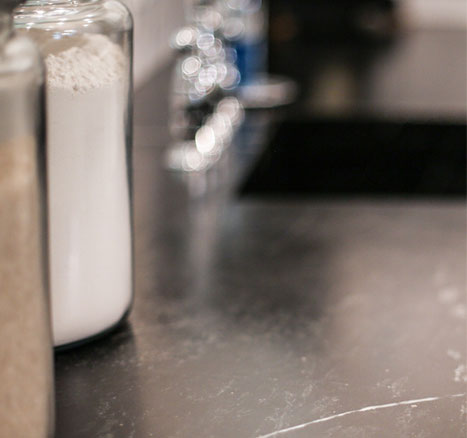
Soapstone comes in various shades of gray that vary from light to dark charcoal. Some have highlights of black, green, or blue. The color is dependent on where the stone was quarried.
PROS:
- Unique, exquisite look
- Rich with dramatic characteristics
- Solid and durable
- Easy to repair and buff out scratches
- Can integrate soapstone sinks
CONS:
- Very heavy – may need to reinforce cabinetry
- Limited color choices
- Susceptible to scratching
Caring for soapstone is simple. Clean regularly with warm water, a mild soap, or an all-purpose cleaner. Use a cutting board and trivets to prevent potential scratches. While soapstone is non-porous, grease and oil spills can cause discoloration in the stone so wipe up spills promptly.
Soapstone will naturally darken over time with use. This oxidation process happens with the use of water, oils and grease and creates a gorgeous patina that brings out the beauty of the stone. To help maintain a uniform patina and speed up the darkening process, mineral oil can be applied directly to the stone. This process needs to be done regularly until the soapstone reaches its full patina which may take several months. Consult with your retail associate for more information.


